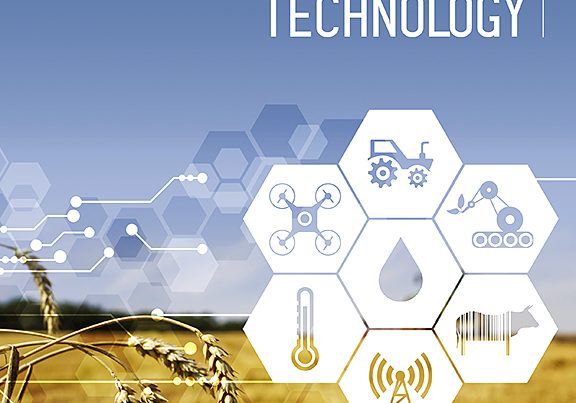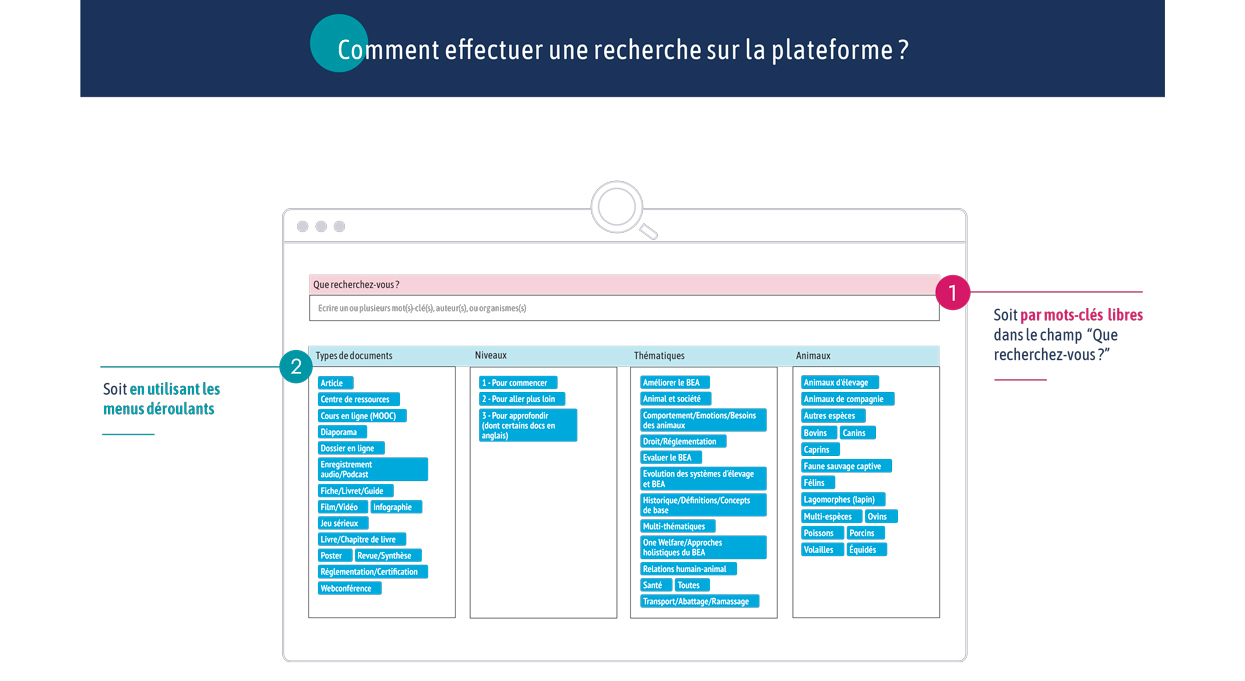Type de document : Article publié dans Sentient Media
Auteur : Karen Asp
Extrait en français (traduction) : L’agriculture intelligente rend-elle la vie plus difficile aux animaux d’élevage ?
[…] Des agriculteurs disent qu’ils utilisent la RV [réalité virtuelle] pour améliorer le bien-être mental des vaches et leur faire croire qu’elles sont à l’extérieur, selon un article de Newsweek.
Les casques de RV ne sont qu’un exemple des innovations technologiques, souvent appelées « agriculture intelligente », qui changent le visage de l’agriculture animale. […]Quel est donc l’impact de l’agriculture intelligente sur le bien-être des animaux d’élevage ? C’est une question que l’on cherche encore à élucider, et la réponse n’est pas aussi tranchée qu’on pourrait le croire au premier abord.
Face à la préoccupation croissante du public pour le bien-être des animaux dans le monde entier, certains considèrent les gains d’efficacité offerts par les nouvelles technologies comme une menace directe pour les animaux eux-mêmes, permettant aux producteurs d’obtenir « plus pour moins » dans l’intérêt du profit », écrit Marian Stamp Dawkins, professeur à l’université d’Oxford au Royaume-Uni, dans Frontiers in Animal Science. « D’autres voient des avantages majeurs en termes de bien-être grâce au suivi sanitaire tout au long de la vie, à la fourniture de soins individuels et à l’optimisation des conditions environnementales. » […]
Pourquoi les agriculteurs se tournent vers l’agriculture intelligente
Comme son nom l’indique, l’agriculture intelligente consiste à utiliser la technologie en élevage, et ce depuis la révolution industrielle. La plus grande différence entre cette époque et aujourd’hui ? « Les appareils motorisés sont remplacés par l’intelligence artificielle (IA) », explique Ben Williamson, directeur exécutif américain de Compassion in World Farming, une organisation qui vise à mettre fin à l’élevage industriel d’ici 2040.
Par conséquent, les élevages intensifs, où, selon le Sentience Institute, vivent environ 99 % des animaux d’élevage américains, peuvent s’automatiser plus facilement, grâce à des technologies telles que les robots d’alimentation intelligents et les robots de traite pour les vaches laitières. Les données relatives à l’environnement des élevages industriels et aux animaux eux-mêmes peuvent également être collectées plus facilement. Par exemple, des capteurs reliés à des ordinateurs pourraient indiquer si l’équipement fonctionne mal, et des puces et trackers intelligents portés par les animaux (pensez-y comme des Fitbits pour animaux d’élevage) pourraient révéler d’éventuels problèmes de santé et détecter les signes précurseurs de maladie. Et si les casques de RV sont sans aucun doute trop coûteux pour être fournis à chaque animal d’élevage, ils constituent une autre façon dont la technologie change la façon dont nous élevons les animaux.
Les exemples ci-dessus ne font qu’effleurer la manière dont la technologie est utilisée dans le secteur de l’agriculture animale, mais quel que soit le mode, l’objectif est le même. « L’agriculture intelligente est conçue pour augmenter les rendements et la productivité des animaux d’élevage », explique M. Williamson. Et il existe des preuves que cela fonctionne.
Par exemple, un agriculteur turc, cité dans l’article de Newsweek, a déclaré qu’avant d’utiliser des casques de RV avec ses vaches, il obtenait 22 litres de lait par jour. Pourtant, après que deux de ses vaches ont utilisé des casques de RV, ce qui, selon lui, leur a donné un coup de fouet émotionnel et a réduit leur stress parce qu’elles regardaient des pâturages verts, leur production moyenne de lait est passée à 27 litres. Dans un article publié par la Commission européenne, l’auteur cite une étude qui a montré que lorsque les vaches étaient équipées de puces auriculaires et de mangeoires intelligentes, le rendement laitier augmentait de 1 % et la qualité du lait de 20 %.
Place du bien-être animal dans l’équation de l’agriculture intelligente
Les entreprises qui produisent des technologies d’agriculture intelligente mentionnent l’amélioration du bien-être animal comme l’un des avantages. Mais, selon M. Dawkins, l’amélioration ou la détérioration du bien-être animal par l’agriculture intelligente dépendra de trois facteurs. Trois développements seront cruciaux pour l’évaluation éthique de l’agriculture intelligente dans son traitement des animaux : la définition du « bien-être » qu’elle adopte, la reconnaissance du bien-être par l’ordinateur et, surtout, la question de savoir si le bien-être des animaux d’élevage est réellement amélioré par l’application de la technologie de l’agriculture intelligente », écrit-elle.
Il existe bien sûr de nombreuses façons de définir le bien-être animal, mais quelle que soit la définition, elle s’apparente à celle que l’on donne au bien-être humain. […] « Les animaux veulent vivre sans contrainte, être en bonne santé et avoir des relations sociales saines, ce que l’agriculture animale ne permet pas. » […]En fin de compte, l’agriculture intelligente pourrait finir par intensifier la souffrance animale. « Comme vous n’avez pas besoin d’autant d’humains impliqués dans l’agriculture intelligente, vous pouvez augmenter le nombre d’animaux dans les élevages intensifs, ce qui signifie que les animaux seront confinés dans des espaces encore plus réduits », explique Anthis, ajoutant que plus d’animaux signifie également plus d’épidémies, ce qui peut entraîner des problèmes de santé pour les humains. « Tous les petits gains que vous ferez en diminuant leurs souffrances seront annulés par ces augmentations. » […]Cela ne veut pas dire que toutes les technologies d’agriculture intelligente sont, faute d’un meilleur mot, mauvaises. Comme le fait remarquer M. Williamson, bon nombre de ces technologies aident les agriculteurs à mieux utiliser les ressources naturelles grâce à des innovations telles que l’irrigation de précision et les technologies qui relient les petits agriculteurs entre eux.
Pourtant, lorsqu’il s’agit des animaux, l’agriculture intelligente semble être la mauvaise voie à suivre. « Les animaux veulent vivre longtemps et heureux, et même s’ils ne se rendent pas compte qu’ils sont malheureux, nous le savons et il y a un poids éthique qui pèse sur nous tous pour faire en sorte que les animaux vivent une bonne vie », explique Williamson. « Ces solutions technologiques ne sont pas du tout des solutions mais ne font qu’aggraver un système alimentaire qui conduit tristement la planète et beaucoup de ses habitants vers l’extinction. »
Extrait en anglais (original) : […] Farmers say they’re using VR [Vitrual Reality] to enhance the cows’ mental well-being and make the animals think they’re outside, according to an article in Newsweek.
VR headsets are just one example of the technological innovations, often called smart farming, changing the face of animal agriculture. […]So just what impact does smart farming have on farmed animals’ well-being? That’s a question still being teased out, and the answer isn’t as clear-cut as you might initially think.
“With rising public concern for animal welfare across the world, some people see the efficiency gains offered by the new technology as a direct threat to the animals themselves, allowing producers to get ‘more for less’ in the interests of profit,” writes Marian Stamp Dawkins, a professor at the University of Oxford in the United Kingdom, in Frontiers in Animal Science. “Others see major welfare advantages through life-long health monitoring, delivery of individual care and optimization of environmental conditions.” […]
Why farmers are turning to smart farming
As its name may imply, smart farming is the use of technology in animal agriculture, and it’s something that’s been around since the Industrial Revolution. The biggest difference between then and now, though? “Motorized devices are being replaced with artificial intelligence (AI),” says Ben Williamson, U.S. executive director of Compassion in World Farming, an organization aiming to end factory farming by 2040.
As a result, concentrated animal feeding operations (CAFOs), which is where Sentience Institute estimates that roughly 99 percent of U.S. farmed animals live, can automate more easily, using technology like smart robotic feeders and robotic milkers for dairy cows. Data about the environment inside factory farms and the animals themselves can also be collected more readily. For instance, sensors linked to computers could indicate if the equipment is malfunctioning, and smart wearable tags and trackers on the animals (think of them as Fitbits for farmed animals) could reveal potential health issues and spot early signs of illness. And while VR headsets are undoubtedly too costly to provide for every farmed animal, they’re another way technology is changing the way we farm animals.
The above examples only touch the surface of how technology is being used in the animal agriculture industry, but no matter the mode, the goal is the same. “Smart farming is designed to increase the yields and productivity from farmed animals,” Williamson says. And there’s proof it’s working.
For instance, a farmer in Turkey was quoted in the Newsweek article as saying that prior to using VR headsets with his cows, he was getting 22 liters of milk per day. Yet after two of his cows used VR headsets, which he says gave them an emotional boost and lowered their stress because they were watching green pastures, their average milk production rose to 27 liters. And in an article posted by the European Commission, the author points to one study which found that when cows were outfitted with smart ear tags and feeders, milk yield increased by one percent and milk quality by 20 percent.
Where animal welfare fits into the smart farming equation
Companies producing smart farming technology do mention improved animal welfare as one benefit. But Dawkins argues that whether smart farming improves or damages animal welfare will depend on three factors. “Three developments will be crucial to the ethical evaluation of smart farming in its treatment of animals: the definition of ‘welfare’ it adopts, computer recognition of welfare, and crucially, whether the welfare of farmed animals is actually improved by the application of smart farming technology,” she writes.
There are, of course, many ways animal welfare has been defined, but no matter the definition, it’s akin to how you would define human welfare. […] “Animals want to live unconfined, be in good health, and have healthy social relationships, none of which animal agriculture allows.” […]Ultimately, smart farming could wind up intensifying animal suffering. “Because you don’t need as many humans involved with smart farming, you can increase the number of animals in CAFOs, which means animals will be confined in even tighter spaces,” says Anthis, adding that more animals also means greater disease breakouts, which can lead to health issues for humans. “Any small gains you make in decreasing their suffering will be outweighed by these increases.”
That’s not to say that all smart farming technology is, for lack of a better word, bad. As Williamson notes, many of these technologies help farmers make use of natural resources better through the use of innovations like precision irrigation and technology that connects smaller-scale farmers with each other.
Yet when it comes to the animals, smart farming seems to be the wrong way to go. “Animals want to live long, happy lives, and even if they don’t realize they’re unhappy, we do and there’s an ethical burden upon all of us to ensure that animals live a good life,” Williamson says. “These technological solutions are not solutions at all but are just compounding a food system that’s sadly driving the planet and a lot of its inhabitants into extinction.”






